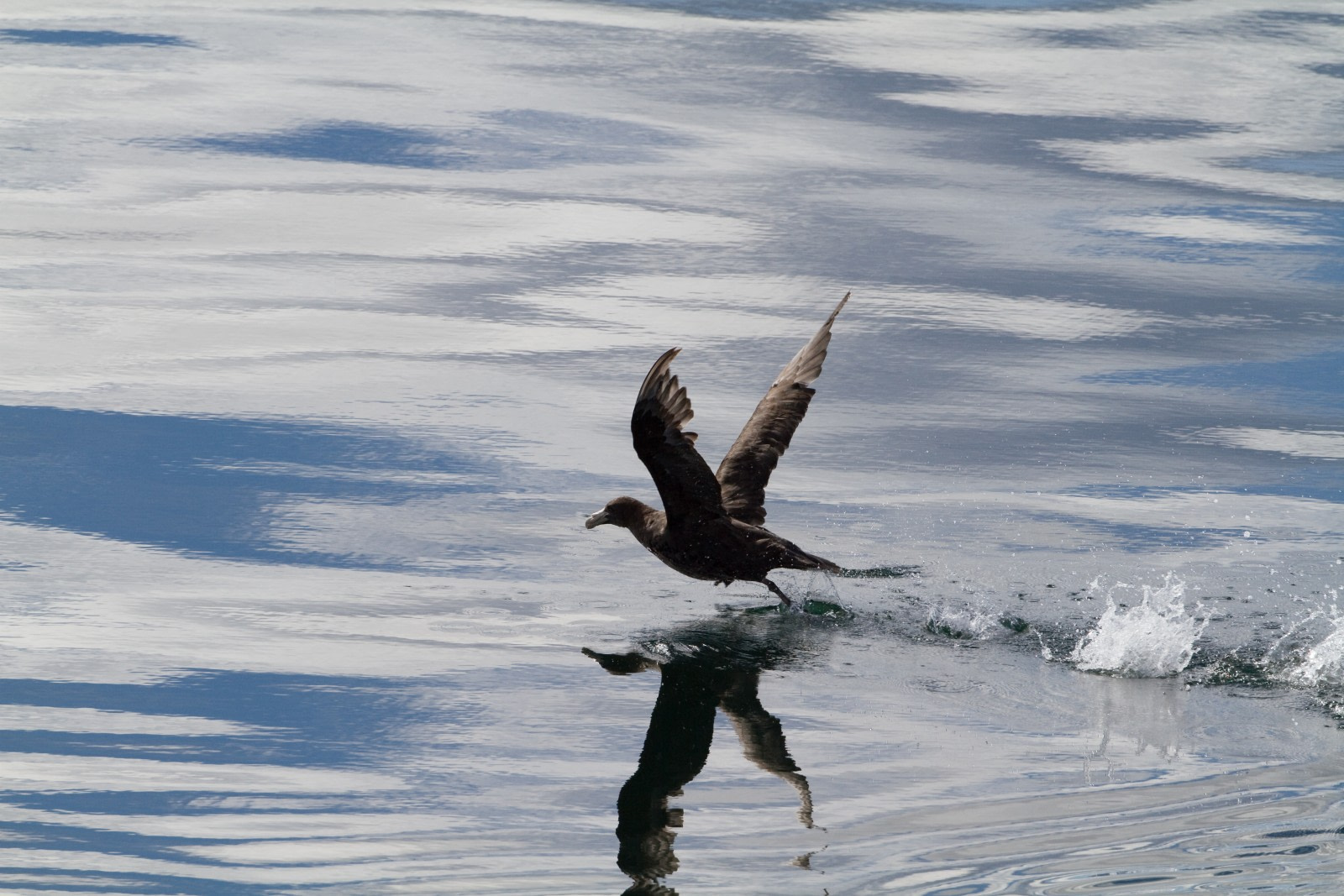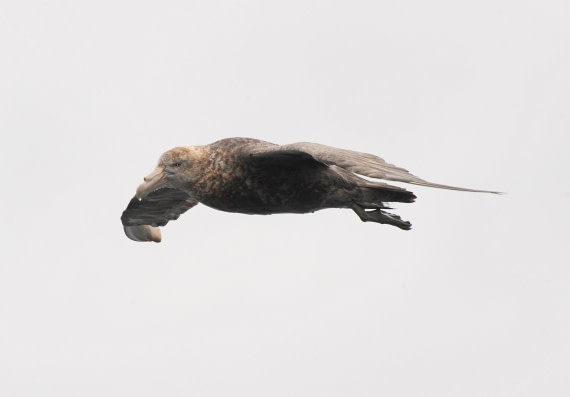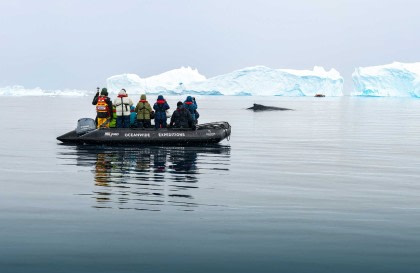Name: Northern Giant Petrel (Macronectes halli) - Hall’s Giant Petrel, Sea Vulture
Southern Giant Petrel (Macronectes giganteus) – Antarctic Giant Petrel, Giant Fulmar, Stinker, Stinkpot, Gluttons
Length: Northern – 80 to 95 cm. Southern – 85 to 100 cm.
Weight: Northern – 3 to 5 kg. Southern – 3 to 8 kg.
Location: Antarctic up through into subtropical regions of South America, Australia, and Africa.
Conservation status: Least Concern.
Diet: Carrion, birds, krill, squid, fish.
Appearance: Mottled grey or brown. Hooked bills. Body-configuration resembles that of the Albatross, though Petrels tend to be more hunch-backed.
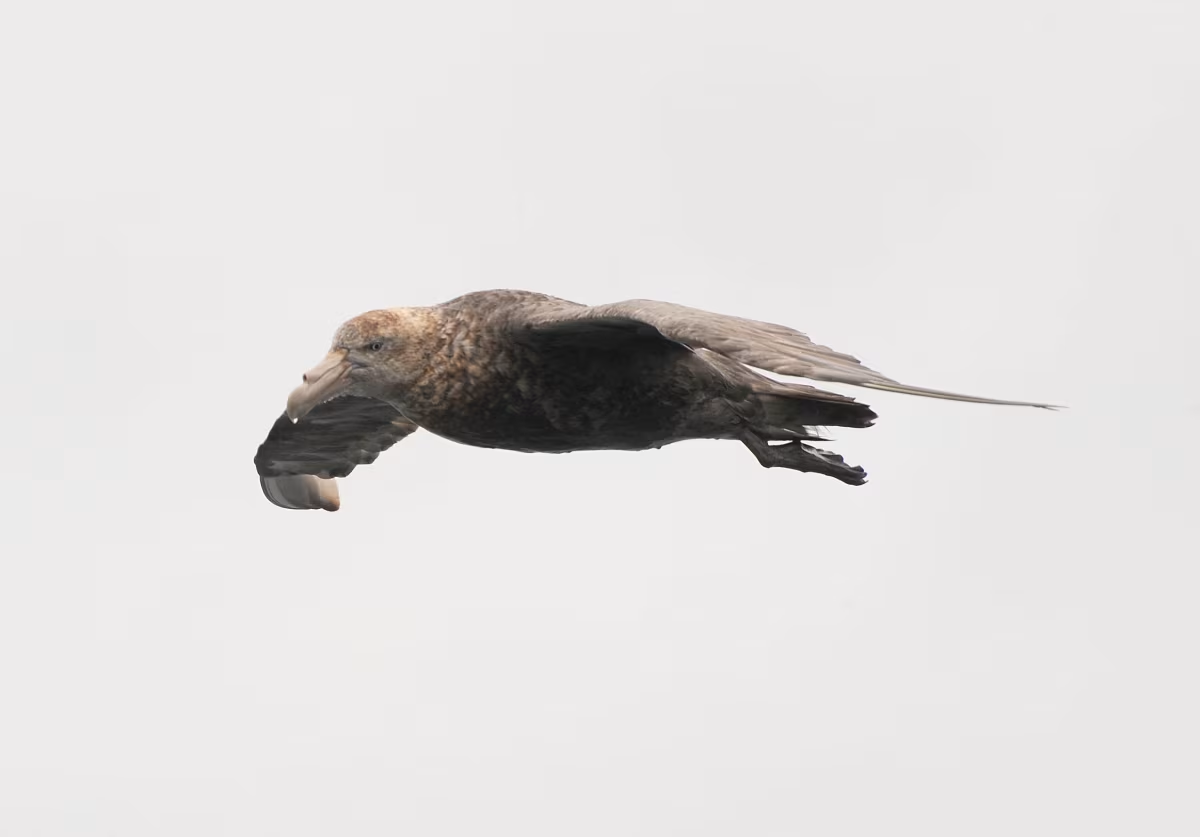
How do Giant Petrels feed?
Giant Petrels are prime examples of opportunistic feeders eating almost anything they can get their bills into. Unlike other procellarids Petrels will also feed on land, mainly meaning carrion.
They are known to attack other birds, either beating them to death or drowning them. This applies especially to juvenile birds and chicks.
They are also often spotted following fishing ships in order to pick fish out of nets or to collect offal.
Are Giant Petrels social?
Giant Petrels will remain alone until breeding season by choice, however they are often brought together around food sources. They can become quite aggressive toward each other over disputed food.
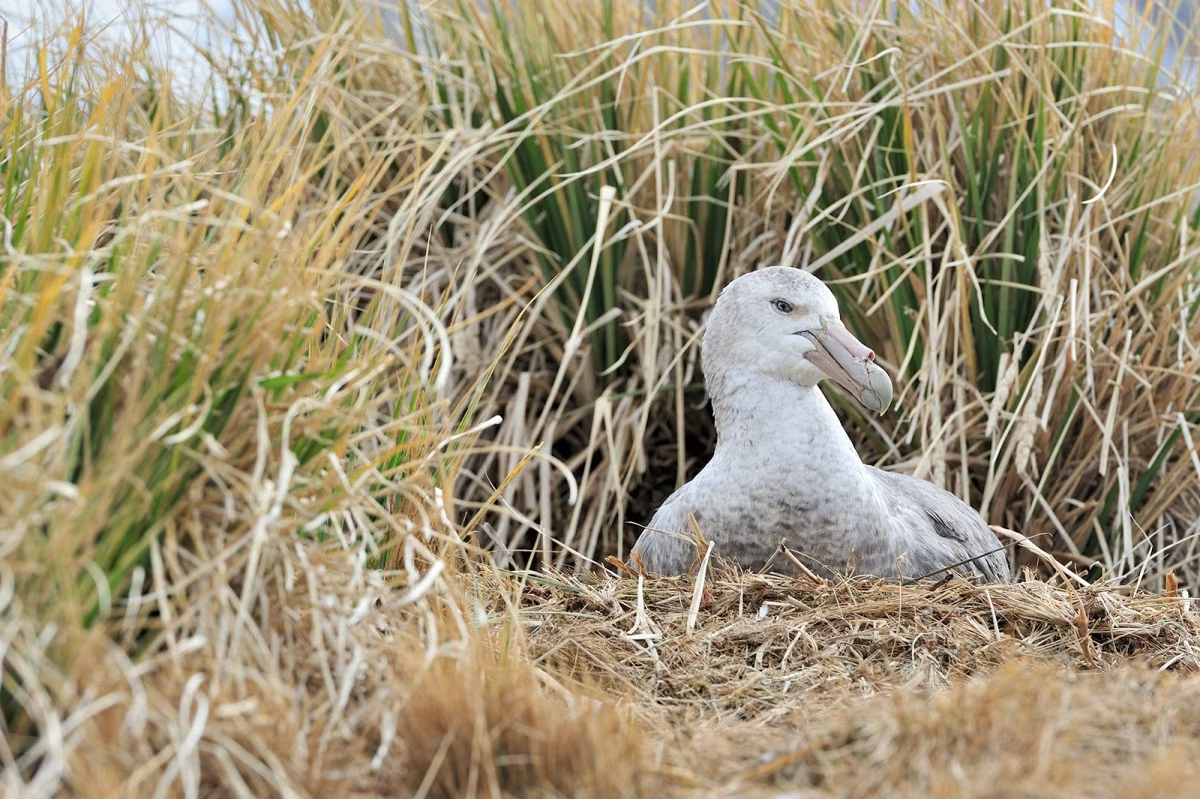
How fast do Giant Petrels fly?
Under favourable conditions Giant Petrels can sustain speeds of up to about 20 metres per second.
What are Giant Petrel birthing rituals like?
Northern Giant Petrels become sexually mature at around 10 years of age. Southern Giant Petrels tend to mature a bit earlier, at around 6 years of age.
Many breeding locations are shared between the Northern and Southern Giant Petrels on islands throughout the southern oceans, although the Northern members tend to breed starting about 6 weeks earlier than their Southern counterparts, the latter beginning their season in October. Specific breeding seasons depend on where in the world any particular colony is located.
Nests are created on rocky or grassy ground and consist of moss, grass, and stones. One egg is laid. Incubation lasts around 60 days. Once hatched the chick will fledge (take its first flight) at somewhere around 4 months. Once the juvenile fledges the parents will abandon it, leaving it to forage for itself from there on out.
How long do Giant Petrels live?
Giant Petrels live up to 20 years in the wild.

How many Giant Petrels are there today?
The Northern Giant Petrel population is estimated to be between 17,000 to 21,000. The Southern population is estimated at 97,000.
Do Giant Petrels have any natural predators?
Giant Petrels do not really have any natural predators, although they will come into potentially harmful conflict when trying to hunt Skua chicks and eggs.
7 Grand Giant Petrel Facts
- Petrels produce stomach oil which they can either spray out as a defensive measure or can be regurgitated as an energy-rich food for chicks or for themselves during long flights.
- Giant Petrels are the only members of the Procellariidae family (Petrels, Prions, and Shearwaters) that have legs strong enough to allow them to move around on land.
- Like some other seabird species, Giant Petrels secrete a saline solution from a nasal passage in order to rid their bodies of the excess salt they swallow while feeding.
- There is an exception to the mottled grey look of the Petrels. About 15% of the southern branch of the Petrels are almost completely white, causing them to be mistaken for albatrosses.
- Northern Giant Petrels have a reddish-pink bill while the Southern Petrels have bills that are a pale green.
- The name Macronectes comes from Greek words makros which means “long” and nēktēs meaning “swimmer.”
- The name “petrel” comes from the story of Saint Peter who walked on water because petrels look like they’re running on water as they begin to take off into flight.
